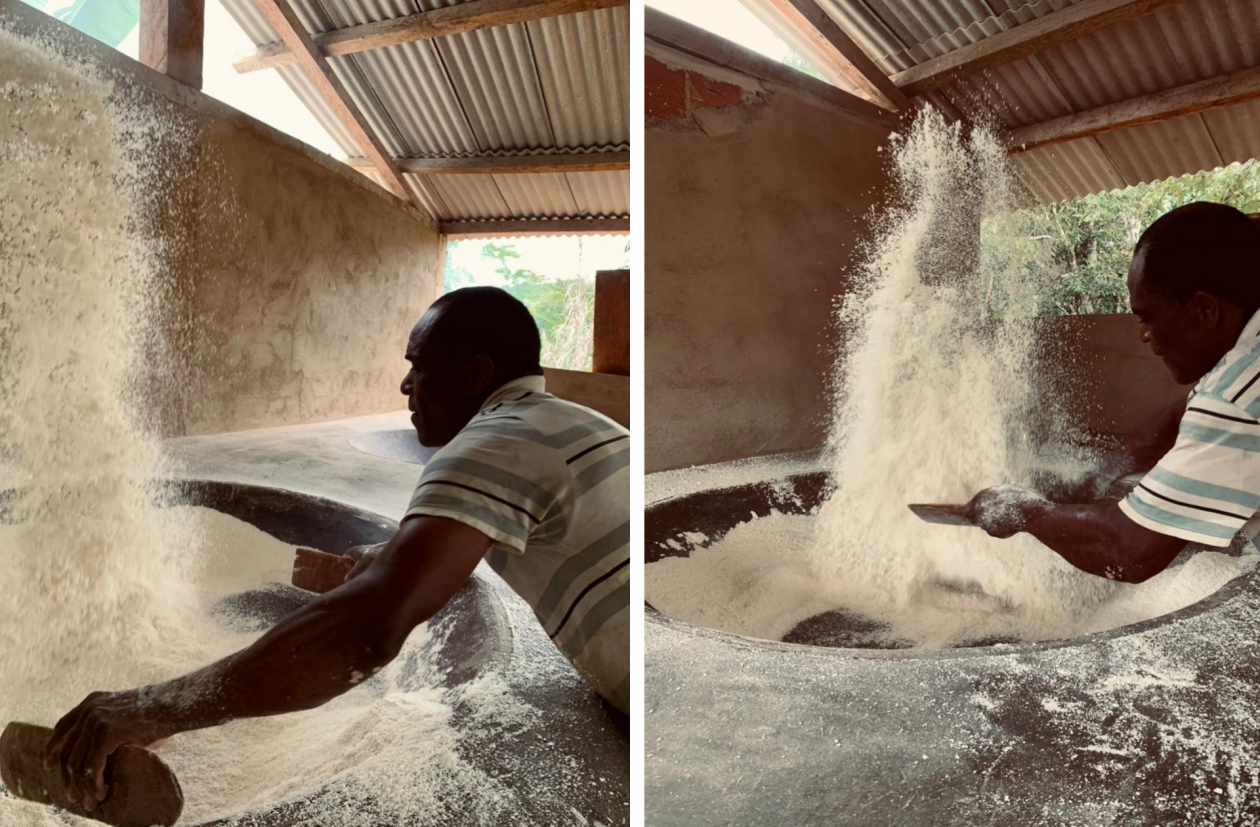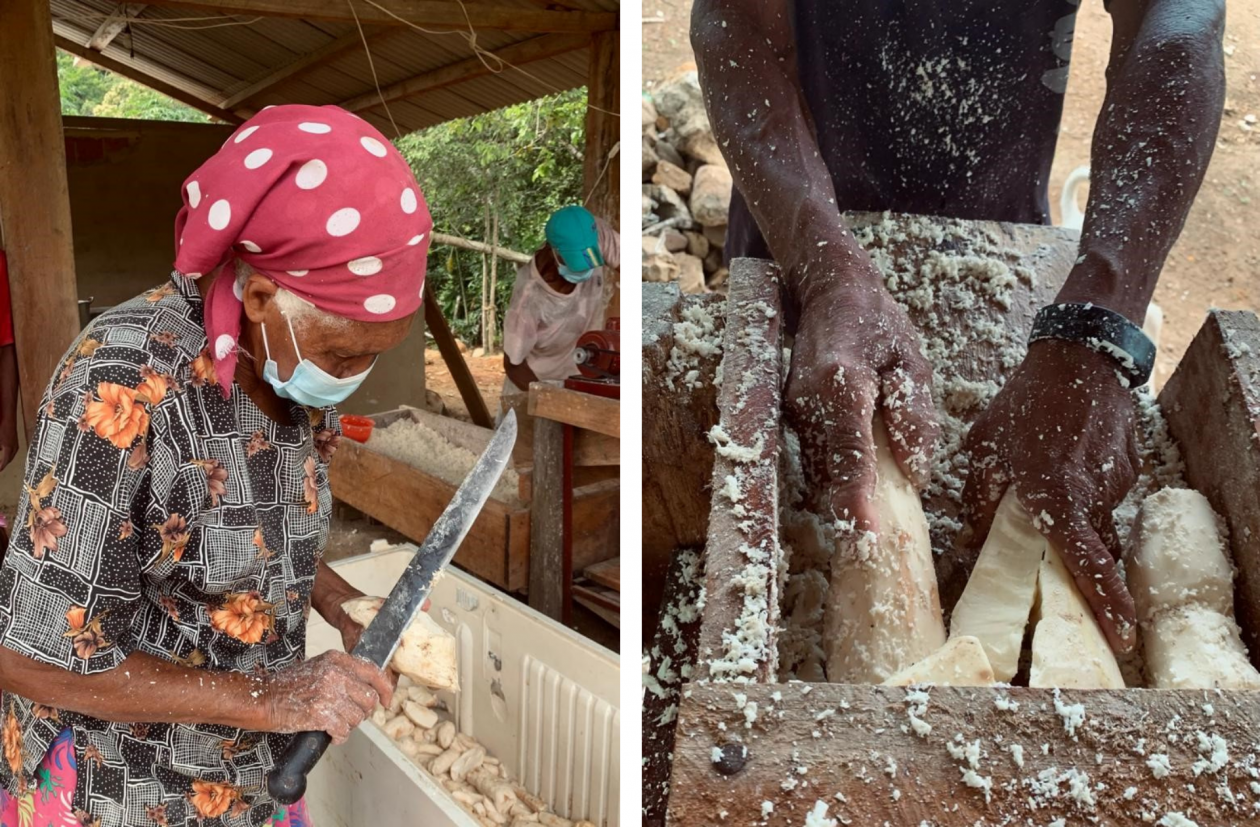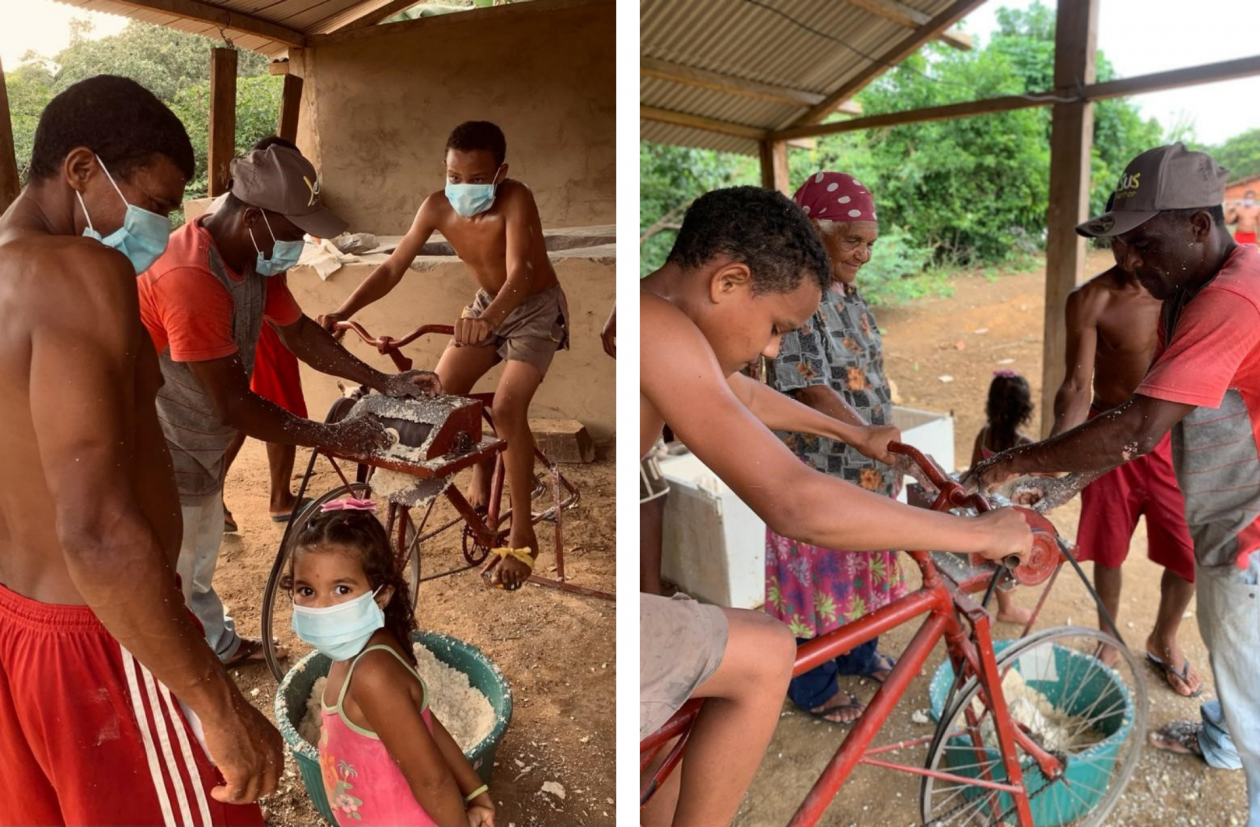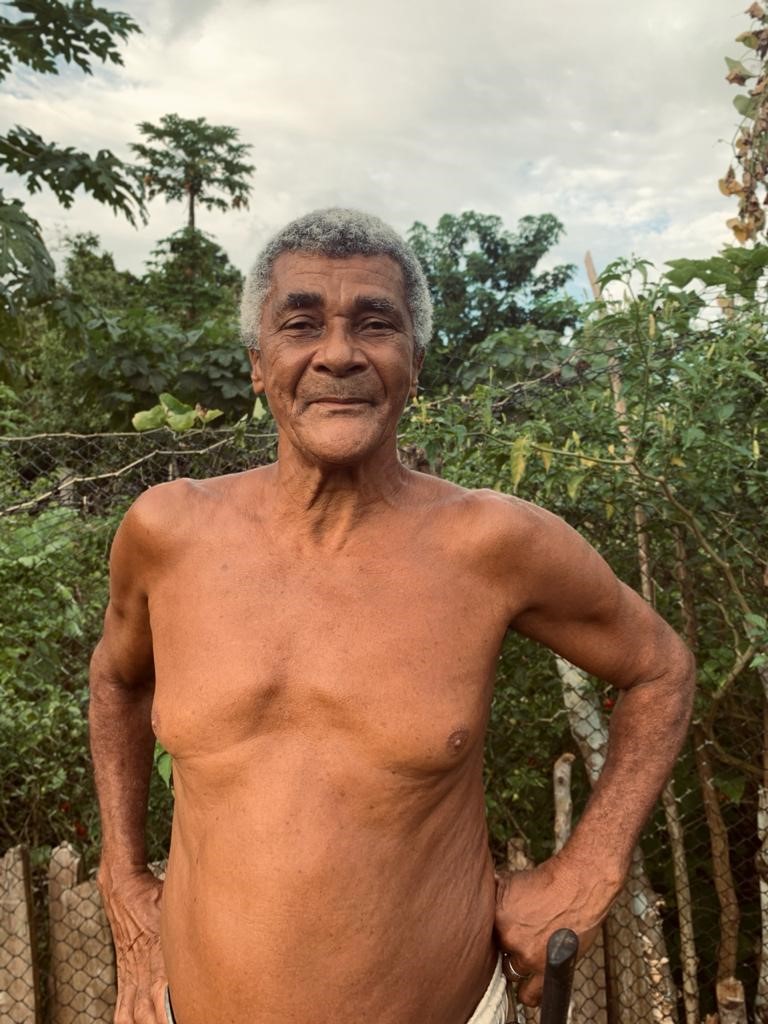
Words by Eduardo Alfredo Moraes Guimarães of The Institute for Human and Integrated Development (ITC), an organization supported by CASA Socio-Environmental Fund (CASA). CASA is Global Greengrants Fund’s grantmaking arm in Brazil.
It is a revolutionary act to oppose the monoculture of colonial export agriculture and, at the same time, to revitalize traditional crops such as cassava.
Cassava is a plant with deep meaning in the ancestral traditions of Indigenous Peoples worldwide.
In Bahia, Brazil, specifically the Floresta do Sul settlement, where cocoa plantations are common, we find decay in the plants “addicted” to pesticides and industrial fertilizers typically used in industrial agriculture. The infrastructure for cocoa production – barges, fermentation troughs, and deposits – are abandoned and in ruins. Evidence shows that, with the appropriation of the land, the “landless” Indigenous and Quilombolas Peoples have inherited unsustainable monoculture, leading the farmers to bankruptcy.
Returning to cultivation technologies that use the ancestral knowledge of the original peoples can benefit vulnerable segments of the population such as the elderly, people with disabilities, and rural communities. With support from the Casa Socio-Environmental Fund and Global Greengrants Fund, people burned out by the strenuous work in the cocoa plantations are transcending agribusiness monoculture by planting everything together as their ancestors once did.

The Institute for Human and Integrated Development (ITC) project, “The Indigenous and African ancestry in the buzz of Agrarian Reform: inclusion of people with disabilities and sustainability”, was supported by CASA and Global Greengrants Fund .
During a particularly challenging year, when the COVID-19 pandemic presented new challenges, the importance of community access to sustainable, nourishing food was especially important. With low cocoa production, the low price of almonds, difficulties in transportation, and, above all, the inconvenience of the lockdown, the importance of planting one’s own food (such as cassava) became clear to the families involved in the project.
In 2019, with support from CASA and Global Greengrants Fund, the work took on another dimension: helping elderly and disabled people. The community, with ITC monitoring and technical support from Agrosivultura São Cosme e Damião, created an agroforestry area and a community flour house. This was a project of fundamental importance because, until then, the nearest flour unit was about 9 miles away from the settlement, a route covered on foot, with the flour transported on the back of a donkey.

ITC and Agrosilvicultura Cosme e Damião brought in seedlings of native trees, at that time rare in the region, sharing their knowledge about the characteristics of each planted tree. These trees included rosewood (a hard wood used in the manufacture of furniture and musical instruments), brazilwood (used in the production of the violin bow and very important in medicine), and guapuruvú (used in the production of canoes). They also brought in seedlings of kola nut, nutmeg, and moringa. The settled families participated with seedlings and plant seeds from their gardens and, with their wisdom, everything worked out in the end.

Photo: Maria Eduarda Andrade Guimarães
In a short time, the flour house became a large communal kitchen just for cassava. Not surprisingly, a careful look at the Quilombola communities in the surroundings reveals the existence of this type of kitchen, which is dedicated exclusively to cassava. It is a very simple kitchen in which the main foods that are served include cassava as a main dish, beijus (a type of bread), and puba (sour cassava flour, widely used in the production of cakes and sweet tamales).
The project is changing the perspective of families and, little by little, agroforestry is consolidating itself as an alternative to cocoa monocultures and other commodities brought by the industries that suffer from the “one-track-mind” thinking. The small agroforestry project is producing an abundance of crops, including cassava. The rich diversity of crops already points to income generation in the near future. There is the possibility of selling some surplus products (cocoa, cupuaçu, pupunha, açaí, etc.) and even the use of the hardwood that grows fast in the agroforestry plots. The hardwood can be used for other purposes, including the construction of canoes, roofs, doors, windows, and furniture. There are even those who advocate for the formation of a lutherie which would make guitars, violin bows, and even electric guitars with this precious wood, to the delight of the settlement.
As the pandemic progressed, agroforestry put food on the table of families, revealing the importance of agriculture that prioritizes production for self-consumption. With the support of the ITC, the settled families – with a lot of creativity – completed the work on the flour house and cassava became food on their plates at a very difficult moment at the peak of the pandemic.
